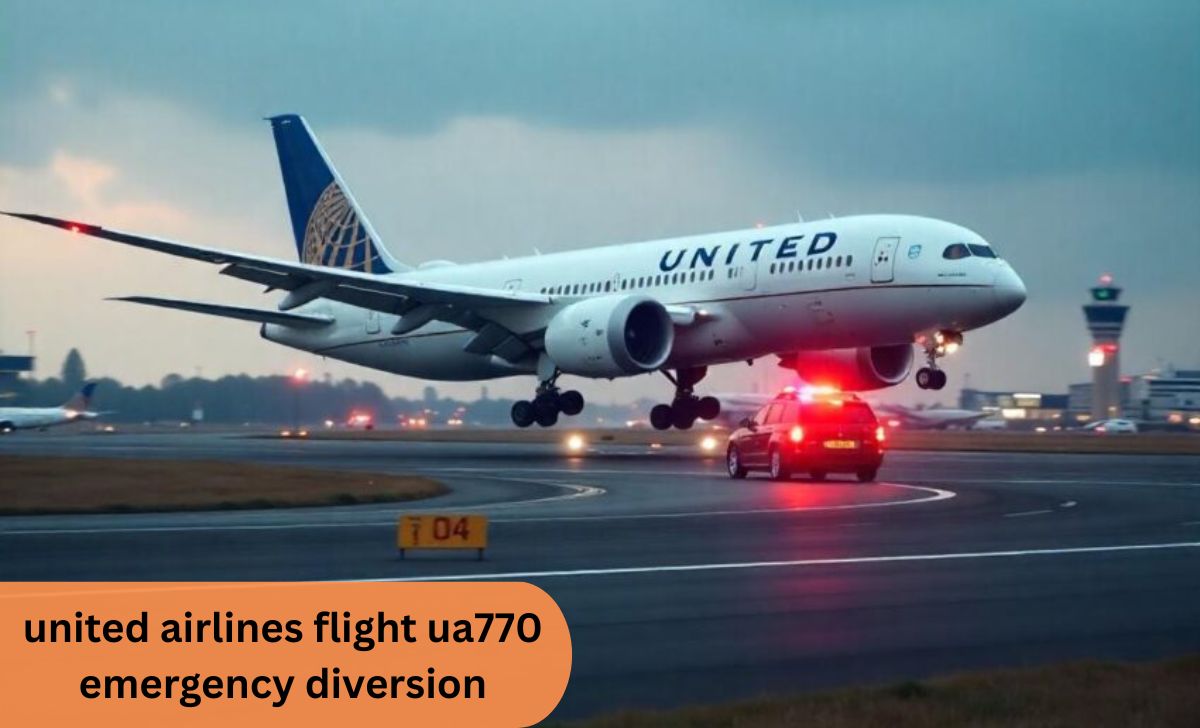United Airlines Flight UA770, traveling from Barcelona to Chicago, faced an unexpected emergency mid-air when the pilots squawked 7700, the international code for a general emergency. The Boeing 787-9 Dreamliner was quickly diverted to London Heathrow Airport, one of Europe’s busiest and best-equipped airports to handle such incidents.
United Airlines Flight UA770 declared an emergency mid-flight and diverted safely to London Heathrow. Passengers were unharmed, and the incident highlighted strong aviation safety protocols and crew professionalism.
In This Article We Discuss”United Airlines Flight UA770 Emergency Diversion”
United Airlines Flight UA770 Declares Mid-Air Emergency
United Airlines Flight UA770 turned into a moment of global concern when the aircraft declared a mid-air emergency while traveling across Europe. The announcement spread rapidly through aviation tracking sites and news outlets because the crew squawked the emergency code 7700, instantly alerting air traffic controllers.
This code is not used lightly; it signals that something abnormal or potentially serious is taking place on board. For passengers, the sudden change was unsettling, while for aviation professionals, it was an expected demonstration of safety systems working exactly as designed.
What Does “Squawking 7700” Mean in Aviation?
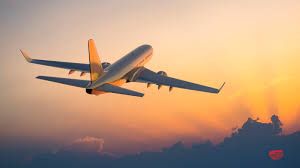
The transponder code 7700 is the international signal for a general emergency. When a crew sets the transponder to this code, every nearby air traffic controller is instantly alerted, regardless of whether the crew is already in communication with one.
This ensures that the aircraft is given immediate priority over all other flights. Air traffic may be rerouted, airports alerted, and emergency services placed on standby.
Importantly, declaring 7700 does not always mean a life threatening issue is occurring; it may be as simple as a precautionary response to a technical irregularity or a medical concern. Still, the code ensures that all possible support is available in case the situation escalates.
The Route- Barcelona to Chicago Interrupted
Flight UA770 began its journey at Barcelona El Prat Airport, bound for Chicago O’Hare International Airport. This is a well traveled route for both leisure and business passengers, linking two major global cities.
On this occasion, however, the transatlantic flight did not go as planned. Somewhere over European airspace, the crew decided that the safest course of action was to divert. This decision turned an ordinary long haul journey into an extraordinary event, reminding the aviation world of how quickly circumstances can change at 35,000 feet.
Why Was Flight UA770 Diverted?
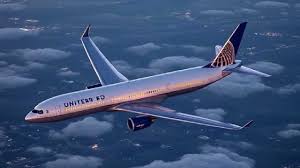
United Airlines has not publicly released the specific reason for the diversion, which is standard practice until a full inspection and report are completed. Possible causes range from mechanical issues and passenger medical emergencies to external environmental factors.
Aviation experts emphasize that diversions are made with passenger safety as the top priority. Even if the issue appears minor, the crew will act cautiously to ensure no risks remain. By choosing to divert rather than continue, the pilots of UA770 demonstrated sound judgment and strict adherence to aviation safety standards.
London Heathrow: The Chosen Emergency Landing Site
The decision to divert to London Heathrow International Airport was a strategic one. Heathrow is one of the busiest airports in the world, but it is also one of the most capable when it comes to handling emergencies. Its infrastructure includes advanced maintenance facilities, full scale medical support, and highly trained emergency crews.
For an aircraft like the Boeing 787-9 Dreamliner, Heathrow provides the necessary runway length, technical expertise, and support staff to manage the diversion smoothly. Passengers may not have expected to land in London, but the airport was chosen to maximize their safety and minimize operational risks.
Safe Landing at Runway 27R- What Happened Next
The Dreamliner touched down at Heathrow’s Runway 27R in the late afternoon, with emergency vehicles positioned nearby. While their presence may have looked alarming to onlookers, it was a precautionary measure rather than a sign of catastrophe.
The landing itself was smooth, and there were no reports of panic or injuries among passengers. After touchdown, the aircraft taxied to Gate B44, where passengers disembarked in an orderly manner. Ground engineers quickly began inspecting the aircraft to identify the source of the problem, ensuring it was safe before any further operation.
Passenger Experience During the Diversion
Passengers onboard experienced disruption and concern, but also relief that the emergency was managed with such professionalism. For many, hearing that the aircraft had declared an emergency was a frightening moment.
However, the calm demeanor of the crew reassured travelers that the situation was under control. Once at Heathrow, passengers were offered assistance, including vouchers and rebooking options. Although the diversion caused delays and inconvenience, the outcome reinforced for travelers that safety is always the airline’s priority.
United Airlines’ Immediate Response to the Incident
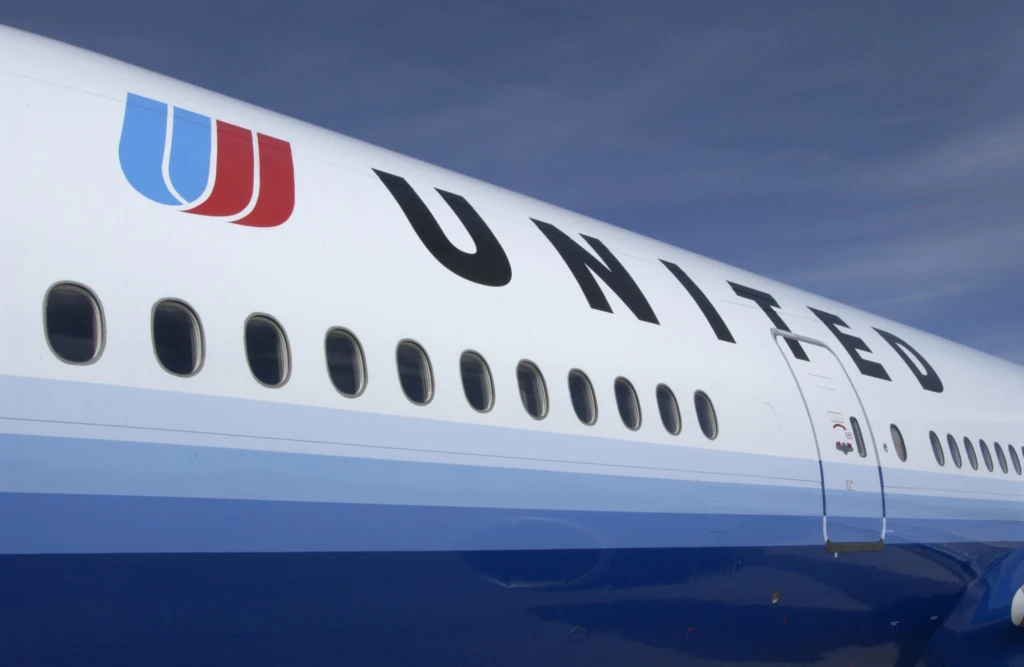
As soon as Flight UA770 landed, United Airlines issued public updates confirming that the aircraft had diverted and that all passengers were safe. Behind the scenes, the airline’s operations team worked rapidly to coordinate alternative travel for passengers.
United’s crisis management procedures involve customer service representatives, engineers, and operational staff working together to minimize disruption. This proactive response not only handled the practical needs of passengers but also reassured the public that the airline was acting transparently and responsibly.
Aviation Experts Weigh In on the Emergency
Aviation analysts and experts stressed that this event was an example of standard safety systems functioning correctly. Declaring 7700 does not automatically mean disaster; rather, it means the crew is ensuring maximum support to deal with an abnormal situation.
Experts pointed out that emergencies like this happen regularly in aviation worldwide, and in almost all cases, they end safely because of the extensive training and coordination between flight crews and air traffic control.
How Flight Crews Handle Mid-Air Emergencies
Flight crews are trained to remain calm under pressure and to follow strict protocols during emergencies. When an issue arises, pilots run through detailed checklists that help them identify and respond to the problem.
If additional expertise is required, they can consult airline dispatchers and maintenance staff via satellite communication. Their training prepares them to manage workload effectively, delegate responsibilities between the captain and first officer, and prioritize passenger safety above all else.
Air Traffic Control’s Role in Emergency Diversions
Once Flight UA770 declared its emergency, air traffic controllers became an essential part of the response. ATC ensured that the aircraft had a clear path to Heathrow, rerouting other planes if necessary.
They provided real time weather data, guidance vectors, and communication with emergency responders on the ground. The seamless coordination between the aircraft and controllers demonstrated why ATC is considered the backbone of aviation safety during unexpected events.
Pilot Training- How Crews Prepare for Crisis Situations
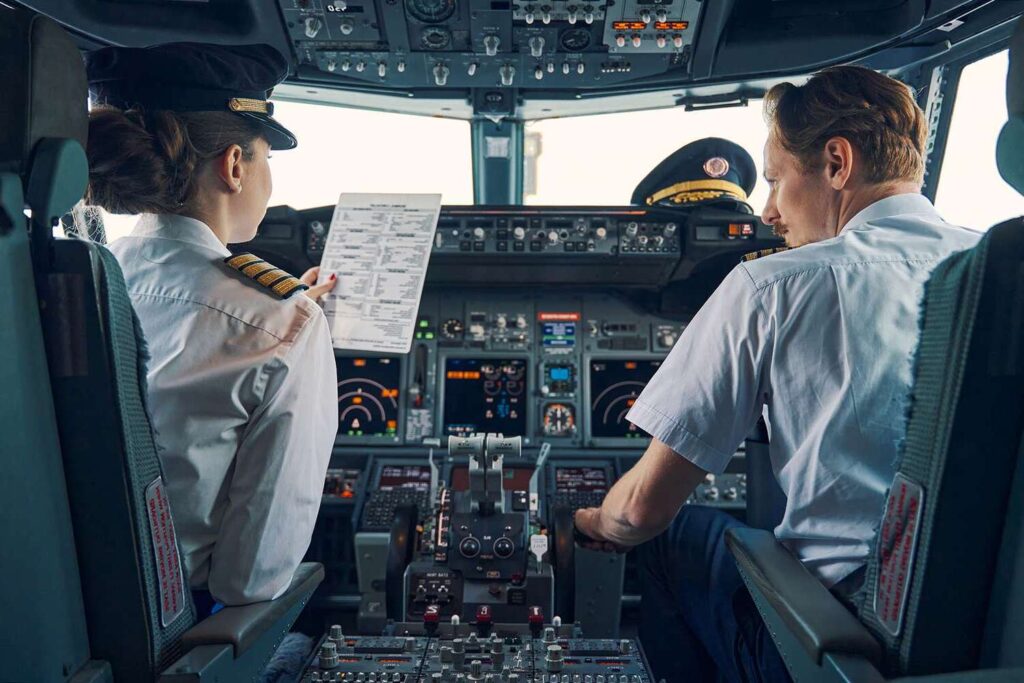
Pilots spend hours every year inside simulators practicing emergencies that most will never encounter in their careers. Training includes handling engine failures, hydraulic issues, fire warnings, and medical diversions.
By practicing these scenarios in a controlled environment, pilots develop the reflexes and decision-making skills needed to manage them in real life. The outcome of Flight UA770 reflects this training, as the crew managed the emergency professionally, ensuring that passengers were never at unnecessary risk.
Aircraft Involved- Boeing 787-9 Dreamliner Explained
The Boeing 787-9 Dreamliner is known for being one of the safest and most advanced long-haul aircraft in operation today. It uses state-of-the-art systems to improve efficiency, passenger comfort, and safety.
However, no aircraft is immune to potential technical irregularities. Like all complex machines, even a Dreamliner can encounter minor issues that require diversions. The safe handling of UA770 demonstrates that while technology plays a vital role, human decision-making remains critical in aviation safety.
Passenger Rights During Emergency Landings
When diversions occur, passengers are not left without support. Aviation regulations require airlines to provide updates, care, and assistance during delays caused by emergencies. This includes rebooking, meals, and sometimes accommodation if needed.
For Flight UA770, United Airlines followed these protocols to ensure passengers were looked after while waiting for onward travel. Knowing these rights helps passengers remain calm and reassured when unexpected diversions occur.
The Importance of Airline Safety Protocols
Flight UA770’s safe diversion highlighted how strict safety rules protect passengers. Airlines operate under rigorous international regulations that require continuous training, regular aircraft maintenance, and strict adherence to emergency procedures.
These safeguards ensure that even in abnormal situations, risks are minimized and passenger safety remains the first priority.
How Diversions Affect Airline Operations and Scheduling
An emergency diversion is not just a passenger inconvenience; it is also a major logistical challenge for airlines. Operations teams must reassign crews, inspect aircraft, arrange alternative flights, and manage passenger care.
While diversions are costly and disruptive to scheduling, they are an accepted part of aviation because no expense is spared when it comes to ensuring safety.
Common Causes of Flight Diversions Worldwide
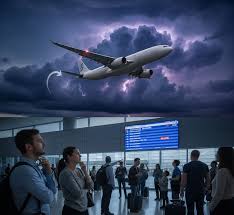
Globally, diversions happen for many reasons. These can include technical malfunctions, weather disruptions, medical emergencies, or even unruly passengers.
The vast majority of these diversions are precautionary rather than life threatening. By treating every potential issue with caution, airlines reduce the chance of small problems escalating into larger ones.
Lessons for Travelers- Staying Calm During Emergencies
For passengers, hearing that their flight has declared an emergency can be frightening, but aviation experts urge travelers to stay calm. Crews are highly trained, and every procedure is designed to protect passengers.
Following crew instructions and trusting the process is the best way to handle such situations. The experience of UA770 demonstrates that even when travel is disrupted, the systems in place work exactly as intended.
Why Most In-Flight Emergencies Are Managed Safely
Despite the dramatic sound of the term “emergency,” statistics show that aviation remains the safest form of travel. Pilots, engineers, and controllers train constantly to manage abnormal situations.
Aircraft are equipped with redundant systems to handle technical problems. For this reason, the majority of emergencies end as routine diversions rather than disasters.
What This Incident Means for the Future of Air Travel
The diversion of United Airlines Flight UA770 serves as both a reminder and a reassurance. It reminds travelers that unexpected events can occur in aviation, but it also reassures them that safety protocols are robust and effective.
For the industry, it highlights the importance of ongoing training, aircraft maintenance, and coordination between airlines and regulators. For passengers, it is proof that even in moments of uncertainty, the aviation system is designed to keep them safe above all else.
Conclusion
The emergency diversion of United Airlines Flight UA770 demonstrated how advanced aviation safety systems and highly trained crews work together to protect passengers in unexpected situations. While the declaration of a 7700 emergency code may sound alarming, the successful diversion and safe landing at London Heathrow highlighted the reliability of airline safety protocols.
For travelers, this incident serves as a reassurance that aviation remains the safest form of transportation, even when flights do not go exactly as planned. The professionalism of the crew, the preparedness of air traffic control, and the efficiency of ground staff ensured that what could have been a crisis became a routine safety operation.
FAQs
1. What happened to United Airlines Flight UA770?
Flight UA770 declared a mid-air emergency and diverted from its original Barcelona-to-Chicago route, landing safely at London Heathrow Airport.
2. Why did the pilots squawk 7700?
Squawking 7700 is the international signal for an emergency. It alerts all air traffic controllers and ensures the flight gets priority handling.
3. Was anyone injured during the diversion?
No injuries were reported. The landing was safe, and passengers disembarked normally at Heathrow Airport.
4. What type of aircraft was used for Flight UA770?
The aircraft was a Boeing 787-9 Dreamliner, one of the most advanced and fuel-efficient long-haul planes in operation today.
5. Why was London Heathrow chosen for the diversion?
Heathrow was selected because of its long runways, excellent emergency response facilities, and ability to handle large aircraft.
6. What happens to passengers after a diversion?
Passengers are assisted by the airline with rebooking, meals, and sometimes accommodation, depending on how long the delay lasts.
7. How common are in-flight emergencies like this?
Emergencies are rare, but they do happen occasionally. Most are precautionary rather than life-threatening, and they usually end safely.
8. Do pilots train for these kinds of situations?
Yes, pilots undergo extensive simulator training every year to handle emergencies such as technical failures, medical issues, or diversions.
9. Is flying still safe after hearing about incidents like this?
Absolutely. Aviation is statistically the safest form of travel, with strict safety protocols and redundant systems in place for emergencies.
10. What should passengers do if their flight declares an emergency?
The best approach is to remain calm, listen to crew instructions, and trust the process. Airline crews are trained to handle every scenario with passenger safety as the top priority.
Read more
Blue Lock Manga- The Ultimate Guide
Fourscore Coffee—A Complete Guide for Coffee Lovers!
Water Softener Cost- A Complete Guide to Pricing, Installation, and Maintenance
